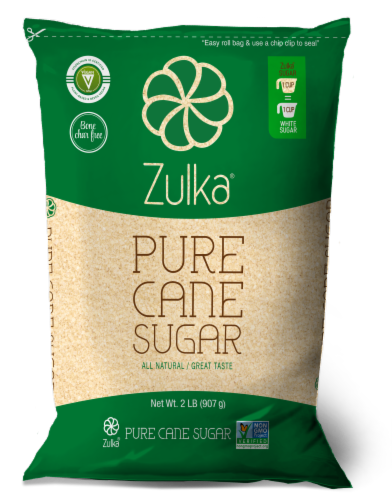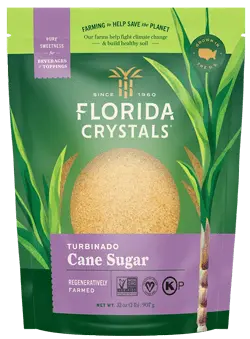Recognizing the Critical Techniques and Technologies Utilized in Modern Walking Stick Sugar Handling
The evolution of cane sugar processing has been dramatically shaped by the integration of advanced techniques and innovations that deal with both efficiency and sustainability. As we discover these essential advancements, it becomes essential to analyze how they not only improve manufacturing however likewise line up with wider market trends and consumer needs, increasing concerns regarding the future of sugar processing and its effects for international markets.
Historic Context of Walking Stick Sugar Processing
The historic context of cane sugar handling reveals an abundant tapestry of agricultural innovation and social exchange that has actually formed its development over centuries. The process of drawing out and improving sugar got momentum in India, where approaches for condensation were refined around the Sixth century.

Advanced Extraction Methods
Effectiveness in cane sugar extraction has actually seen significant improvements, driven by the demand for higher returns and reduced production expenses. Traditional techniques have actually advanced, offering way to ingenious technologies that improve the efficiency of the removal process. One noteworthy development is the usage of enzyme-assisted removal, wherein particular enzymes damage down cell walls and release more sucrose from the walking stick fibers. This strategy not just raises sugar yield but likewise minimizes the power required for processing.
Furthermore, the fostering of membrane layer purification technologies, such as nanofiltration and turn around osmosis, has revolutionized the separation of sugar from contaminations. These approaches permit the discerning permeation of sugar particles while retaining larger contaminants, streamlining the extraction procedure and decreasing waste.
Moreover, the integration of continuous extraction systems has actually brought about boosted functional performance. Cane Sugar Processing. These systems preserve a continuous flow of cane product, ensuring optimal removal problems and minimizing downtime connected with batch processing
Cutting-edge Refining Technologies
Refining methods in walking cane sugar processing have actually undertaken a transformative change, driven by the need for higher pureness and improved product top quality. Among one of the most significant developments is the fostering of membrane purification modern technologies, such as ultrafiltration and nanofiltration. These processes properly get rid of pollutants and colorants without the requirement for substantial chemical treatments, thus maintaining the sugar's all-natural flavor and enhancing its allure.
An additional substantial innovation is using ion exchange resins, which permit selective elimination of undesirable ions from sugar options. This innovation not only raises the overall purity of the end product however also contributes to decreased waste and ecological effect.
Moreover, innovations in adsorption methods, using turned on carbon and various other sophisticated materials, have verified reliable in decolorizing sugar services while preserving ideal top quality. The assimilation of these innovative refining technologies guarantees that suppliers can produce refined sugar with superior clearness and taste, satisfying the advancing choices of customers.
Automation and Control Equipment
Recent developments in refining innovations have led the way for significant enhancements in automation and control systems within walking stick sugar processing facilities. These systems utilize sophisticated software application and hardware to enhance operational effectiveness, decrease human error, and ensure consistent product top quality.
Modern automation incorporates numerous my review here elements, consisting of sensors, actuators, Get the facts and programmable logic controllers (PLCs), enabling real-time monitoring and control of vital processes. For instance, circulation, pressure, and temperature prices can be exactly managed throughout removal, explanation, and formation stages, maximizing performance and minimizing waste.
In addition, progressed data analytics and artificial intelligence algorithms play a pivotal duty in predictive upkeep, enabling drivers to expect equipment failings before they take place. This positive method not only minimizes downtime but additionally extends the life-span of machinery.
Additionally, automation promotes the application of Sector 4.0 principles, encouraging sugar mills to accomplish better connectivity and information exchange across procedures. Therefore, decision-making ends up being more educated and agile, eventually enhancing the general competition of cane sugar manufacturing. With these developments, the industry is well-positioned to satisfy expanding global demands while keeping operational excellence.
Sustainability Practices in Sugar Production
Sustainability methods in sugar manufacturing have actually become progressively important as the market looks for to stabilize economic practicality with ecological responsibility. As consumer recognition expands relating to the ecological influences of agricultural practices, sugar manufacturers are taking on cutting-edge methods to decrease their environmental impact.
One substantial approach is the implementation of precision agriculture methods, which make use of information analytics to maximize source usage, such as water and plant foods. This reduces waste and reduces the effect on regional ecological communities. Furthermore, many producers are transitioning to renewable energy sources, such as biomass from sugarcane by-products, to power their operations, thus reducing reliance on nonrenewable fuel sources.
Water administration methods are also important; rain harvesting and effective irrigation systems assist reduce water scarcity issues. Cane Sugar Processing. Additionally, More Help incorporated parasite monitoring strategies reduce chemical use, advertising biodiversity and soil health
Corporate social duty campaigns are arising, with business investing in local communities and ensuring reasonable labor methods. By embracing these sustainability techniques, the sugar sector not just enhances its reputation yet likewise adds to an extra lasting agricultural landscape, leading the way for future generations.

Conclusion
In recap, modern-day walking stick sugar processing includes a variety of advanced strategies and modern technologies that dramatically improve sustainability, effectiveness, and yield. Collectively, these advancements place the cane sugar sector to meet modern demands while addressing crucial international challenges.
The advancement of cane sugar handling has been significantly formed by the integration of innovative strategies and innovations that address both effectiveness and sustainability.The historic context of walking stick sugar handling reveals an abundant tapestry of agricultural advancement and cultural exchange that has actually formed its advancement over centuries. Innovations in milling and refining emerged, laying the foundation for modern walking stick sugar processing.Refining methods in walking cane sugar handling have gone through a transformative change, driven by the need for higher purity and enhanced product high quality.In recap, modern walking stick sugar handling incorporates a variety of innovative techniques and innovations that dramatically enhance yield, effectiveness, and sustainability.